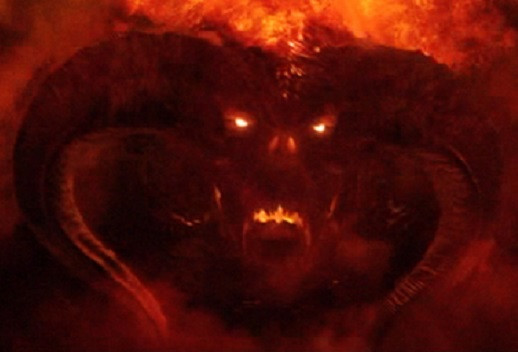Ancient 900-Pound 'Monster' Anthracosuchus Balrogus Crocodile Named After Lord of the Rings

Researchers have revealed that a 16-foot, 900-pound ancient crocodile relative swam in the same waters as the 58-foot long snake Titanoboa, around 60 million years ago.
The reptile, discovered in the same layer of rock as the Titanoboa fossil in the Cerrejon coal mine of northern Colombia, has been named after the "demons of terror" Balrogs characters in the Lord of the Rings.
Researchers say Anthracosuchus balrogus provides a better understanding of how modern crocodiles adapt to changing environments.
"Much like that giant beast, Anthracosuchus balrogus was awakened from deep within a mine after 60 million years trapped within the rocks of tropical South America," researcher Jonathan Bloch, associate curator of vertebrate paleontology at the Florida Museum of Natural History, told Live Science.
The species' short snout and large jaw muscles typical of dyrosaurids, a family of crocodyliforms that lived from the Late Cretaceous to the Eocene, would have given the reptile an incredible bite.

"Everyone thinks that crocodiles are living fossils that have remained virtually unchanged for the last 250 million years. But what we're finding in the fossil record tells a very different story," said lead author Alex Hastings, a postdoctoral researcher at Martin Luther Universität Halle-Wittenberg.
"It quickly became clear that the four fossil specimens were unlike any dyrosaur species ever found," he told Earth Sky.
The study of dyrosaurids in Cerrejon gives an insight into the early history of crocodiles in the Neotropics.
Carlos Jaramillo, co-author of the study and paleobotanist at the Smithsonian Tropical Research Institute, said: "This new finding showcases the wide range of ecological variation that tropical crocodiles already had by 60 million years ago - much larger than modern Neotropical crocodile faunas."
Anthracosuchus balrogus is the third new species of ancient crocodile discovered in the area. The dyrosaurids originated in Africa, but migrated across the Atlantic Ocean to South America around 75 million years ago.
The family survived the Cretaceous–Paleogene extinction event, widely believed to be a meteor strike which hit Earth 66 million years ago.
"This group offers clues as to how animals survive extinctions and other catastrophes," Hastings added. "As we face climates that are warmer today, it is important to understand how animals responded in the past. This family of crocodyliforms in Cerrejon adapted and did very well despite incredible obstacles, which could speak to the ability of living crocodiles to adapt and overcome."
Yet the crocodile would likely have been threatened by the giant snake Titanoboa.
"Titanoboa was the largest predator around and would have tried to eat anything it could get its mouth on," Bloch said.
The research was published in the journal Historical Biology.
© Copyright IBTimes 2025. All rights reserved.






















